- Afrikaans
- Albanian
- Amharic
- Arabic
- Armenian
- Azerbaijani
- Basque
- Belarusian
- Bengali
- Bosnian
- Bulgarian
- Catalan
- Cebuano
- Corsican
- Croatian
- Czech
- Danish
- Dutch
- English
- Esperanto
- Estonian
- Finnish
- French
- Frisian
- Galician
- Georgian
- German
- Greek
- Gujarati
- Haitian Creole
- hausa
- hawaiian
- Hebrew
- Hindi
- Miao
- Hungarian
- Icelandic
- igbo
- Indonesian
- irish
- Italian
- Japanese
- Javanese
- Kannada
- kazakh
- Khmer
- Rwandese
- Korean
- Kurdish
- Kyrgyz
- Lao
- Latin
- Latvian
- Lithuanian
- Luxembourgish
- Macedonian
- Malgashi
- Malay
- Malayalam
- Maltese
- Maori
- Marathi
- Mongolian
- Myanmar
- Nepali
- Norwegian
- Norwegian
- Occitan
- Pashto
- Persian
- Polish
- Portuguese
- Punjabi
- Romanian
- Russian
- Samoan
- Scottish Gaelic
- Serbian
- Sesotho
- Shona
- Sindhi
- Sinhala
- Slovak
- Slovenian
- Somali
- Spanish
- Sundanese
- Swahili
- Swedish
- Tagalog
- Tajik
- Tamil
- Tatar
- Telugu
- Thai
- Turkish
- Turkmen
- Ukrainian
- Urdu
- Uighur
- Uzbek
- Vietnamese
- Welsh
- Bantu
- Yiddish
- Yoruba
ʻO ka ipu hao multi-functional, me kāna hana hoʻoheheʻe wela koʻikoʻi a me ke ʻano paʻa paʻa, ua lilo ia i mea hana kuke pono i ka lumi kuke. ʻO kona pōmaikaʻi nui loa i loko o kāna mālama ʻana i ka wela, hiki ke mālama i kahi mahana mau no ka manawa lōʻihi. Inā he kohu, hoʻolapalapa, braising a kālua paha, hiki iā ia ke hoʻopaʻa i ka ʻono mua o nā meaʻai a hoʻonui i ka ʻono o ke kīʻaha. Hoʻohālikelike ʻia me nā mea kuke maʻamau, ʻoi aku ka paʻa o ka wela o ka POTS hao a kūpono hoʻi no nā kīʻaha lohi, e ʻoi aku ka palupalu o ka ʻiʻo a ʻoi aku ka momona o ka sopa.
Hoʻolei ʻia kēia mea kuke mai ka hao hoʻoheheʻe kiʻekiʻe a mālama ʻia me ka ʻenehana enamel wela kiʻekiʻe. ʻAʻole ia e pale wale i ka ʻōpala a me ka hoʻopili ʻana, maʻalahi ka hoʻomaʻemaʻe, akā pale pū kekahi i ka pilina pololei ma waena o ka meaʻai a me ka metala, e hōʻoia ana i ka palekana o ka meaʻai. I kēia manawa, nani ka waihoʻoluʻu o ka enamel, e hui pū ana i ka pono a me ka aesthetics. Hiki ke hoʻohana ʻia ma ka umu a me ka umu, e hālāwai me nā pono kuke like ʻole.
ʻO kāna hoʻolālā multi-functional kahi mea nui. Hiki ke hoʻohana ʻia i hoʻokahi ipu no nā kumu he nui, kūpono no ka palai ʻana i kēlā me kēia lā, hoʻoulu ʻia, ʻū, a me ka kuke ʻana i nā mea ʻono. ʻAʻohe pono e hoʻololi pinepine i nā mea kuke, pēlā e mālama ai i kahi lumi kuke. ʻO ka poʻi ipu hao me ka hana hoʻopaʻa hoʻopaʻa ikaika, i hui pū ʻia me ka hoʻolālā ʻana o ka wai droplet wai, hiki ke hoʻopaʻa pono i ka wai a me ka ʻono, e hoʻemi i ka nalowale o ka wai, a ʻoi aku ka ʻono o ka stewing. Eia kekahi, mānoanoa a paʻa ke kino o ka ipuhao, paʻa, a hiki ke hāʻawi ʻia i lalo no nā makahiki he nui inā hoʻohana pono ʻia. Hiki ke kapa ʻia he kīhini pae "hoʻoilina ʻohana".
Inā no ka kuke ʻana i ka home a i ʻole ka hoʻokipa ʻana i nā malihini, hiki i ka ipu hao hao nui ke hōʻike i nā hopena kuke pae ʻoihana a he koho kūpono ia no nā ʻohana e nānā pono ana i ka maikaʻi o ke ola. Hoʻohui pū ʻia kāna hoʻolālā retro a me ka maʻamau i kahi paʻi o ka mahanahana a me ke ʻano i ka lumi kuke, e hoʻohui maikaʻi ana i ka pono a me nā aesthetics.
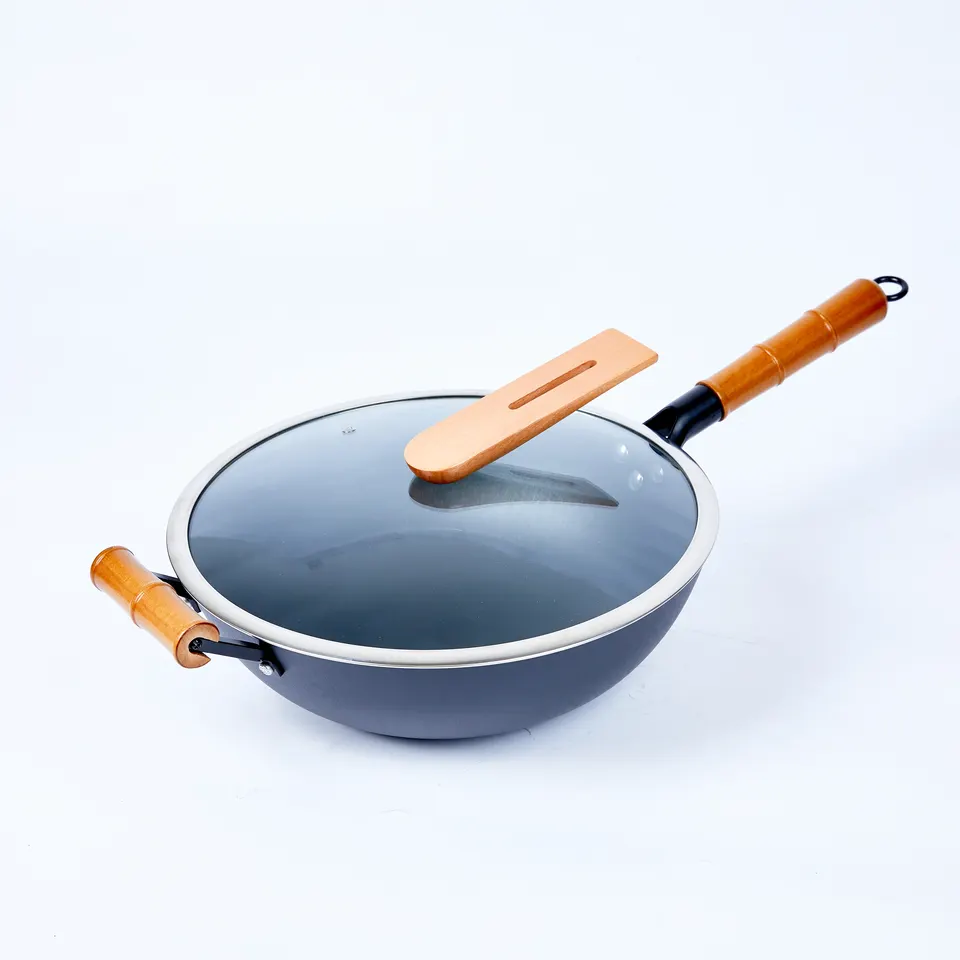
Flat Bottom Glass Lid Cast Iron Non Stick Wok With Wooden Handle
View More
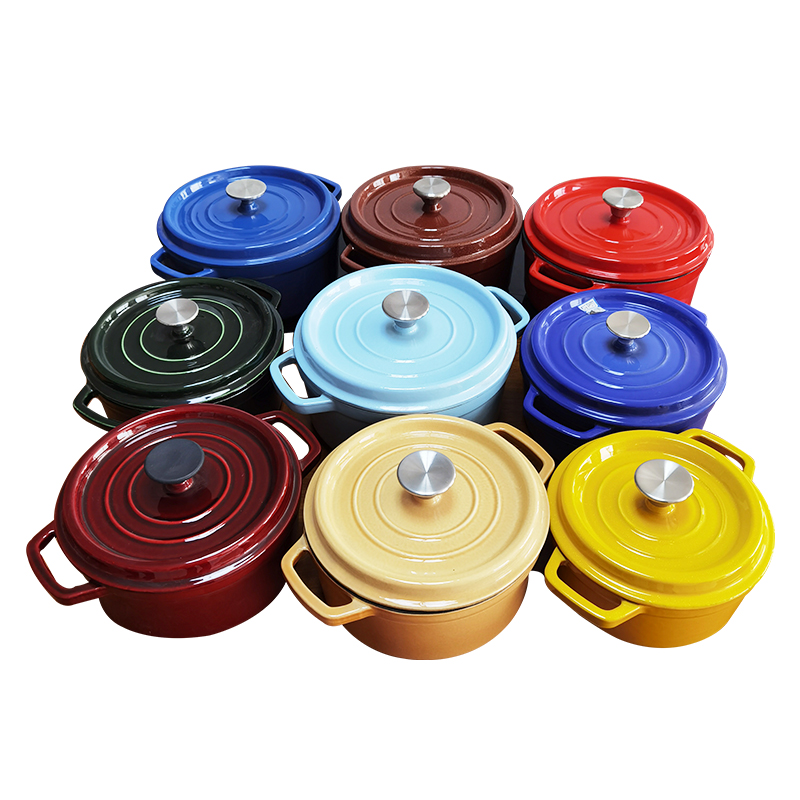
Premium Dutch Oven Non-Stick Casserole Cast Iron Enamel Soup Pots / Frying Pans
View More

Pre-Seasoned Non-stick Cast Iron Wok With One Rivet Wooden Handle
View More
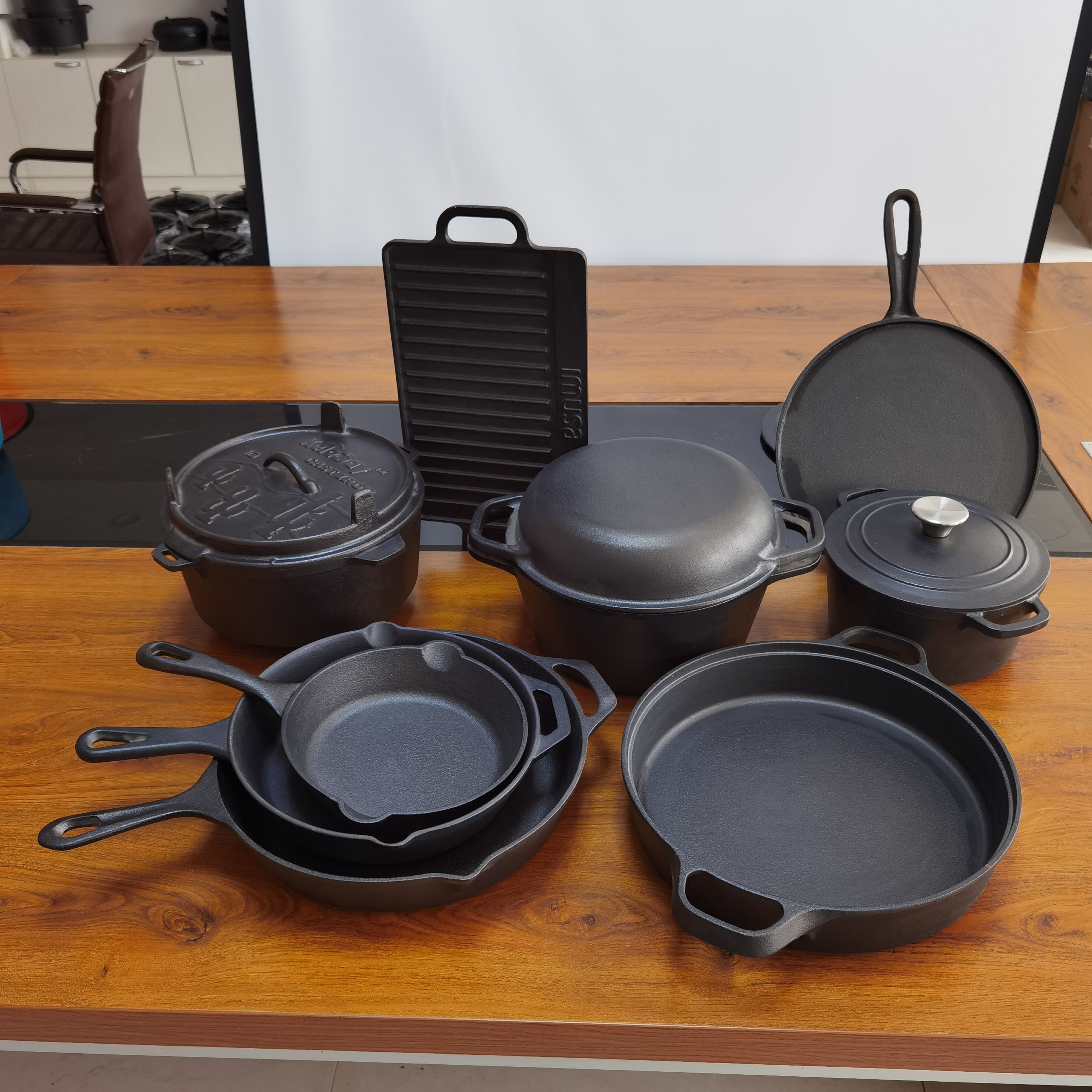
Pre-seasoned cast iron cookware cast iron pots and pans set
View More
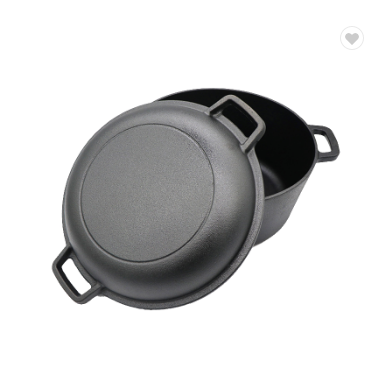
New Design Pre-Seasoned Bbq Cast Iron Pot 6 Quart Round Shape 2 In 1 Dutch Oven With Lid
View More
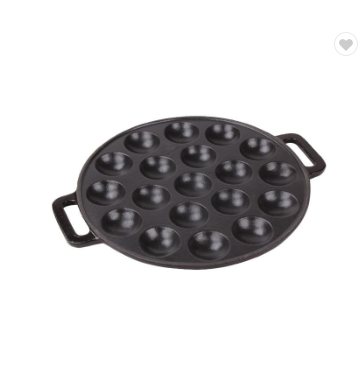
Factory Price 19 Holes Round Pre-Seasoned Cast Iron Bakeware Nonstick Cake Mould Pan
View More

China low price low moQ the best-selling cast iron enamel pot
View More
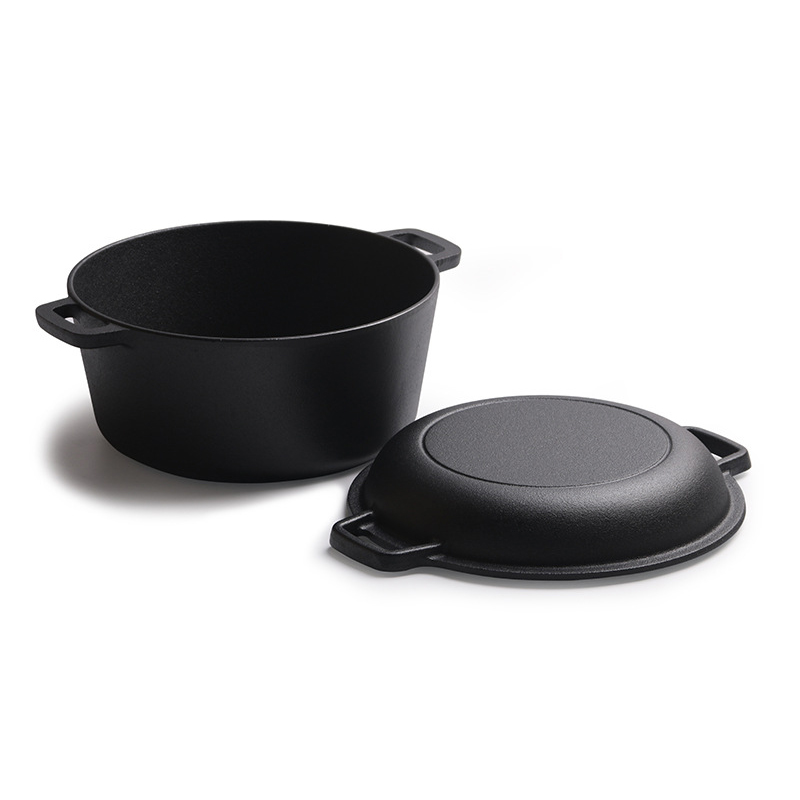
Premium Vegetable Oil Non Stick Cast Iron Pot 2 In 1 Dutch Oven
View More
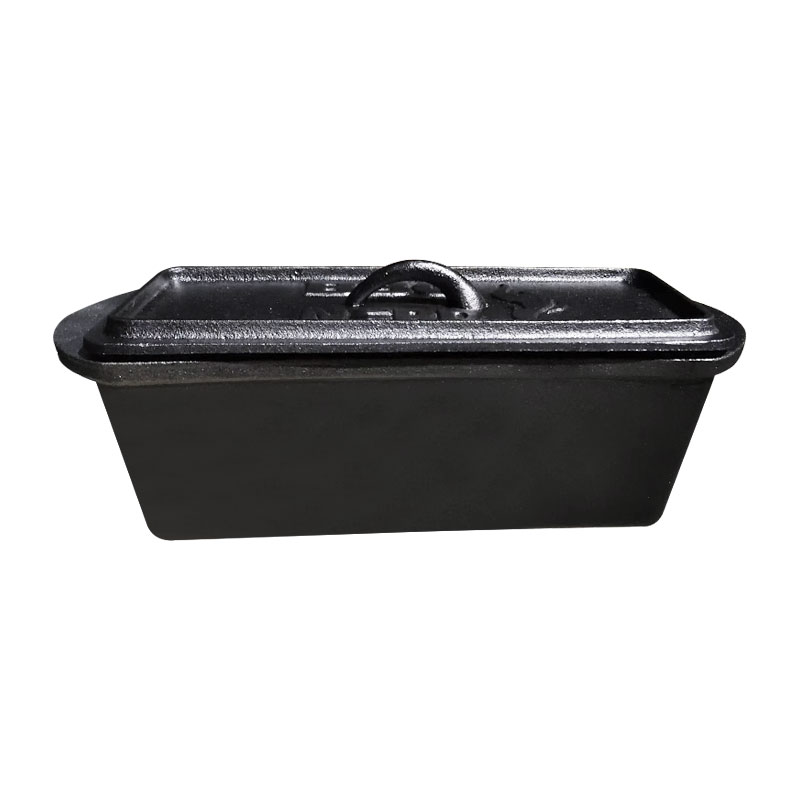
Factory wholesale Pre-seasoned Cast Iron Bread Maker / Bread Pot With Lid
View More
He palekana anei ke kuke ʻana i nā meaʻai acidic i loko o ka hao?
Hiki ke hoʻolei i ka hao POTS me ka palekana i nā meaʻai ʻakika, e like me nā tōmato, ka vīneka, nā lemona, a pēlā aku? ʻO ka pane - ʻAe, akā pono e hoʻomaʻamaʻa ʻia ke ʻano kūpono e kaulike ai i ka ʻono a me ka palekana.
Inā ʻaʻole i hoʻokumu ʻia ka POTS hao maʻamau i "ʻaila kiʻiʻoniʻoni" paʻa a ʻaʻole i hoʻopaʻa inoa ʻia, hiki i ka hoʻopili lōʻihi ʻia me nā meaʻai ʻakika ikaika ke alakaʻi i ka ua nui o ka hao, e hoʻopilikia ai i ka ʻono o ka meaʻai a hiki i ka hoʻoulu ʻana i nā kiko a i ʻole ka pala ma ka ipu kuke. Akā naʻe, ʻaʻole kēia manaʻo ua "insulated" nā meaʻai waikawa mai ka POTS hao. I ka wā e mālama pono ʻia, hoʻolei ʻia ka POTS i hoʻokahi o nā koho kūpono no ka kuke ʻana i nā kīʻaha waikawa.
ʻO Enamel cast iron POTS he mau hoa kūpono no ka kuke ʻana i nā meaʻai ʻakika. Ua uhi ʻia kona pā i loko me kahi uhi enamel maʻemaʻe, hoʻokaʻawale maikaʻi i ka meaʻai mai ke kino metala, pale i ka hoʻokuʻu nui ʻana o nā ion hao, pale i ka discoloration a i ʻole ka ʻono ʻino o ka meaʻai, a ma ka manawa like e hoʻopaʻa i ka pono mālama wela o ka hao ponoʻī. ʻO ia ke ʻano hiki iā ʻoe ke hoʻohana me ka hilinaʻi e hoʻomoʻa i ka sopa tōmato, ka pipi i kālua ʻia i ka waina ʻulaʻula, ka iʻa i ka sopa ʻawaʻawa a me nā kīʻaha ʻē aʻe, e hauʻoli ana i ke olakino a me ka ʻono.
No nā POTS hao kuʻuna me ka uhi ʻole ʻia, ʻoiai ua hoʻopiha piha ʻia ke kino o ka ipuhao a hoʻokumu ʻia i kahi papa kiʻiʻoniʻoni paʻa, ʻoi aku ka maʻamau o ka mālama ʻana i nā meaʻai acidic no ka manawa pōkole. Aia ke kī i ka pale ʻana i ka hoʻomoʻa ʻana i ka wai ʻakika lōʻihi a i ʻole ka mālama ʻana iā lākou i ka pō i loko o ka ipuhao. Eia kekahi, hiki i ka hoʻomaʻemaʻe manawa a me ka mālama ʻana i ka aila ma hope o kēlā me kēia hoʻohana ke kōkua i ka hoʻonui ʻana i ke ola lawelawe o ka mea kuke.
Ma ke ʻano holoʻokoʻa, i ka wā e kuke ai i nā meaʻai ʻakika, ʻo ke koho ʻana i ka ipu hao enamel he ala palekana a ʻoi aku ka maikaʻi, kūpono loa no nā ʻohana olakino e ʻimi nei i ka ʻono kumu o nā meaʻai a me ka kuke aila haʻahaʻa. ʻAʻole wale ia e hoʻokō i nā pono kuke like ʻole, akā hoʻohui pū i ka nani a me ka hana, e lilo ia i mea hilinaʻi āpau i ka lumi kuke.
Ua ʻoi aku ka olakino o ka hao ma mua o ke kila kila?
I loko o nā lumi kuke hou, pili pono ka koho o nā mea kuke i ka ʻike kuke a me ke olakino meaʻai. Hoʻohālikelike ʻia me nā POTS kila kila, ʻoi aku ka maikaʻi o ka POTS hao i ke olakino, kūpono loa no ka manaʻo meaʻai e hoʻoikaika ana i ka kūlohelohe a me nā mea hoʻohui liʻiliʻi. ʻO ka mea mua, hiki i ka POTS hao ke hoʻokuʻu maoli i kahi liʻiliʻi o ka hao i ka wā kuke, e kōkua i ke kino o ke kanaka e hoʻohui i ka hao a pale i ka anemia hemahema. ʻO kēia mea hoʻohui meaʻai intangible kahi mea i loaʻa ʻole i ka POTS kila kila. Eia hou, ʻaʻohe uhi kemika i ka POTS hao a ʻaʻole loaʻa nā mea ʻino e like me PFOA a i ʻole PTFE. ʻAʻole lākou e hoʻokuʻu i nā kinoea ʻona i nā wela kiʻekiʻe. He kūlohelohe lākou, palekana, a me ka ʻole o nā mea hoʻohui, e kūpono ia no ka hoʻohana ʻana i nā ʻohana o nā makahiki āpau. I ka hoʻokaʻawale ʻana, ʻoiai he mau mea palekana ʻo POTS kila kila maikaʻi loa, hiki iā lākou ke hoʻokuʻu i ka nui o ka nickel a i ʻole chromium ke hoʻohana ʻia no ka kuke wela a i ʻole nā meaʻai waikawa (e like me nā tōmato a me ka vīnega), e hoʻopilikia ana i kekahi poʻe me nā kumukānāwai maʻi. ʻOi aku ka paʻa o ka mea hao hao a ʻaʻole hiki ke hoʻokuʻu i nā metala ʻino. Ma lalo o ke ʻano o ka mālama ʻana i ka ipuhao maikaʻi, hiki i ke kiʻi ʻaila kūlohelohe i hana ʻia ke hāʻawi i kahi hopena anti-sticking, e hōʻemi ana i ka hilinaʻi ʻana i nā uhi kemika. ʻO kekahi pono olakino ʻē aʻe o ka hao hao POTS ʻo ia ke kuke ʻaila haʻahaʻa. Ma muli o kona ʻano like ʻole o ka wela a me ka ikaika o ka mālama ʻana i ka wela, hiki ke kuke ʻia ka meaʻai ma ka wela haʻahaʻa a me ka haʻahaʻa, e pale aku i nā uahi i hana ʻia e nā wela kiʻekiʻe a pale i ka ʻōnaehana hanu. Eia kekahi, he kaumaha a he maikaʻi ka hoʻopaʻa ʻana o ka hao POTS, no laila kūpono lākou no ka kuke ʻana i ka wai ʻole a me ka lohi ʻana i ka ʻaila me ka liʻiliʻi o ka aila, e like me ke ʻano o ka meaʻai olakino o kēia manawa "ʻaila māmā, paʻakai māmā a me ka ʻono kumu". ʻOiaʻiʻo, ʻoi aku ka māmā a me ka maʻalahi o ka mālama ʻana i nā POTS kila, e kūpono ana ia no nā hana o kēlā me kēia lā e like me ka hoʻoulu wikiwiki a me ka paila. Eia nō naʻe, inā e loiloi piha ʻia mai kahi hiʻohiʻona olakino, ʻoi aku ka nui o nā ʻohana e nānā pono ana i ka meaʻai, ka ʻaila haʻahaʻa a me nā mea ʻawaʻawa ʻole, ʻoi aku ka maikaʻi o ka POTS hao. ʻAʻole ia he mea hana kuke wale nō, akā he hōʻike pū kekahi o ke ola olakino.
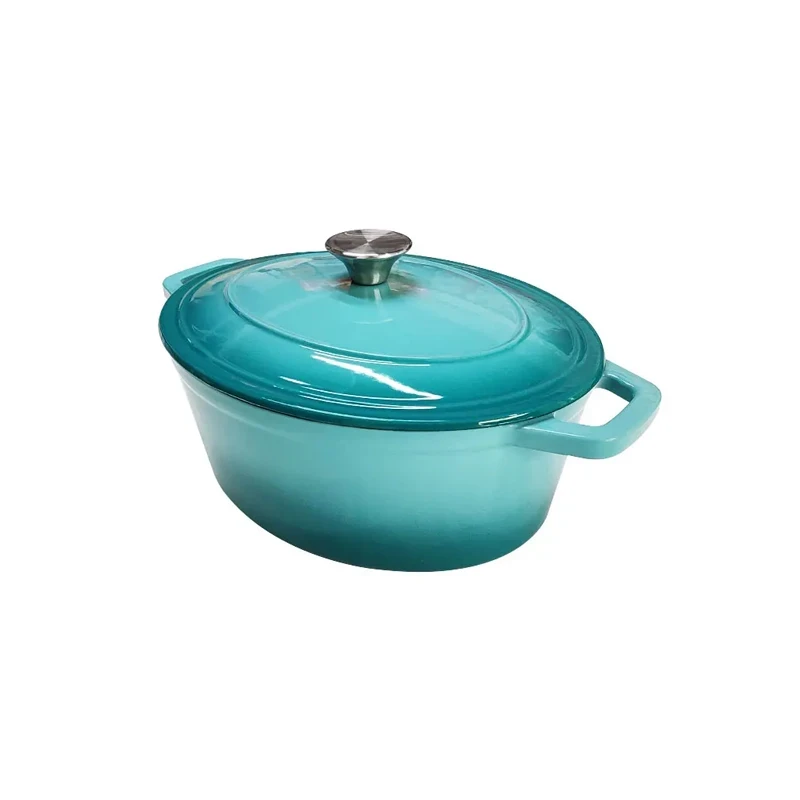
E nīnau i kēia manawa no nā Kuʻuna Mea Kuke hao
E ʻoluʻolu e hoʻopiha i ka palapala ma lalo nei a e hoʻi mai kā mākou hui iā ʻoe me ke kumu kūʻai, nā kikoʻī huahana, a me nā koho hoʻonohonoho.






















